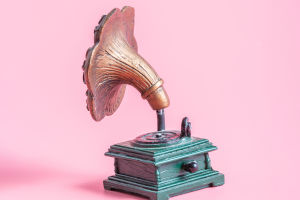The piano is often referred to as the "king of musical instruments" due to its wide range of sound and versatility. With tens of thousands of parts, it is also one of the most complex instruments to build and maintain.
The piano's structure is divided into three main components: the articulation mechanism, the strumming structure, and the pedal structure. In addition, there are the shell and the resonance body, which support and protect these mechanisms.
The choice of wood used in constructing the piano depends on its intended purpose, and a mastery of the characteristics of different woods is necessary. The number and direction of the wood grain, as well as the straightness of the grain, must be taken into account.
Additionally, any wood with insect damage, corrosion, or deformation and bending after sawing should be avoided. The wood must be selected for its strength, density, and hardness, as well as its elasticity, vibration propagation speed, and decay rate depending on its intended use.
The back frame of a piano primarily supports the tension of the strings and the weight of the piano body. In the past, when there was no iron frame, the back frame performed both functions. However, modern pianos have an iron frame that primarily supports the weight of the entire body while connecting and fixing the main parts, such as the soundboard, iron plate, axle plate, and shell.
The brackets of a piano stabilize the strings and soundboard. Usually, there are two strong brackets. Metal brackets are typically chosen for the strings, as they balance sturdiness and reduce bulk, while wooden brackets are used for the soundboard and the piano as a whole.
The keys are the most visible and recognizable component of the piano. The entire instrument is comprised of a combination of black and white keys that are used to produce sound.
The pedal is an essential accessory in the piano beside the keyboard, invented by Italian instrument maker Christofori in 1711 when he was remodelling the piano.
Tuning pegs are peg-like bolts that can be turned with a special wrench. The screw bed is made of special high-carbon steel with a locking mouth so that the strings are firmly wound on the pegs, and intonation is maintained and stabilized for a long time under the high tension of the strings.
The mallet is covered with high-quality felt or fleece and is attached to the keys. When the keys are pressed, the mallet hits the strings, producing sound through the vibration of the strings. The tuning pegs fasten the strings to the piano and are struck by the mallet.
The damper is attached to the strings and is used to stop their vibrations. When a key is pressed on a piano, the hammer inside the piano hits a brass string, creating sound through the vibration of the string. The damper stops the string from vibrating, stopping the sound.
Guts are the most important accessory of the piano, connecting the keys to the hammers. The resonating plate is a large metal plate located at the very back of the piano, attached to the tuning pegs and close to the strings. When the strings are triggered to vibrate and produce sound, the plate causes the sound to resonate twice, reflecting and amplifying the sound through the plate.
The piano is a complex and intricate instrument that requires careful craftsmanship and attention to detail. Its many components work together in harmony to create the rich and varied sounds that make it so beloved.
From the wood used in its construction to the pedals at its base, every part of the piano has a specific purpose and must be crafted and maintained with care.
It is no wonder that the piano remains one of the most popular and cherished instruments in the world.


